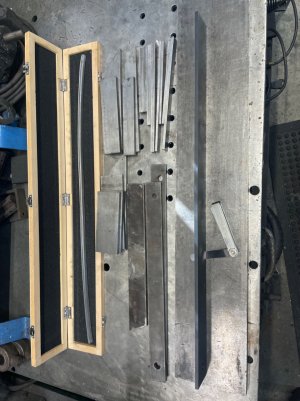wow, this *is* a rabbit hole.
Most of these arguments and differences of opinion come from a difference between the foundations of the discussion.
1) 'what is your accuracy', i.e. to what accuracy is the work you do? There is a world of difference between working to .003 (+/- .0015), .001 (+/- .0005), and .0005 (+/- .00025) and beyond.
2) What can you afford? If you budget is unlimited, buy a New generation Mitutoyo DMM, good to something like .3 millionths of an inch. I daresay all of us fall somewhere else on this scale.
3) What is your current skill level, and what skills are you building? Working to higher degrees of accuracy requires a greater understanding of more factors and deeper skills, etc.
4) What tooling is appropriate for your shop? Not every shop needs or wants a full metrology setup, so the question needs to be rephrased towards: I need to x,y, and z - how do I tool up for this in the most cost effective way? I shouldn't make assumptions about what x,y, and x are.
Have I bored you so far? if so I apologize. But all the other discussions fail at least one of these tests, and results in a totally confusing thread for the OP and all the other casual readers.
------------
I think it's time I get a known good test bar
why? what are you doing with it? what do you mean by a test bar? if you are aligning a headstock, it is a very different requirement than aligning a tailstock, for instance. Not the same tooling.
So I'm going to break my rule and suggest a single scenario for x,y, and z above.
Assumption: aligning a headstock.
Do not mistake
ground bar stock with a test bar. the way they are manufactured is completely different resulting in very different inaccuracies and profiles. Ground bar stock is always centreless ground, which results in suitably accurate local concentricity and dimension - which is suitable for holding in a collet. is this even close as a test bar? No, not even close. The bar, due to manufacturing and handling can bend up to 5 thou per foot, an often resembles a snake at 3 thou tolerances.
Hardened chromed stock for hydraulic cylinders are optimized for local dimension and concentricity, but for the purposes of passing seals and wear bands without exerting undue pressure on those elements. For a short test bar in the order of 6-8" this will work well in .003 and even with care work in higher accuracies. In a 24" scenario, my experience with superior shafting (the old name for these) is that is about a foot too far.
Premade 'test bars' with a Morse taper ground into them: This is a case of 'you don't get what you don't pay for' rather than the opposite. Reputable firms, such as Suburban Tool don't make one. There is a reason for this: there is no guarantee that your taper is in line with the thing you want to measure. Furthermore, on careful measuring with precision v blocks on an AA grade surface plate, none of the ones I have personally measured are even as good as centreless ground bar.
So what does Dabbler use?
Caveat: Everyone with experience rebuilding lathes does things slightly different, and there are guys here that i would confidently say have deeper skills than I. No one person owns the gospel on this.
I use an 8" piece of superior shafting, knowing that it is not perfectly straight. It is over 1.5" in diameter to minimize droop provided by gravity - a factor in alignment - and I have mapped it's best end for clamping and it's deviation over the entire length to a half tenth. I can read accurately with the mapped bar to about 2 tenths at 20 degrees C.
One day I will precision grind a hardened test bar between centres, but that is on the 'some day list', about 4,000 projects down the list.
Economy substitutes are:
precision ground parts from large diesel engines, such as link pins (new ones, of course)
Dowel pins - a 5/8 X 4" dowel pin might set you back 10$, and is very accurately ground. Enough that that .0001m accuracy is attainable.
If you go shorter, then you need to buy a ten thousandths plunge or test indicator. My preference is for a test indicator, but use either form a similar result. By using a shorter test piece and a more sensitive indicator, you can extrapolate reasonable results over the normal hobbyist envelope.
[update] I have never owned a 'test bar' - I've used all 3 options above, over the years.
To end this all-to-lengthy tome, don't get me started on machine flats, straight edges and cammelback straight edges - that is a deeper discussing involving much more detail and minutiae.

